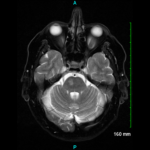Our surgical colleagues, however, demurred on this course of action. Too many steroids, they said, and far too soon. In a conference outside the patient’s room, the surgeons said that a new graft in the aorta needs time to settle in, a process that should be unperturbed by steroids. Also, there were wounds to close and, the sharp-eyed surgical chief resident said, casting a baleful eye on our group, “You know what steroids do to wounds.” Of course we knew. They make them break and leak. While vasculitis may be bad, a dehiscence could be worse was the surgeon’s clear message.
Two Opinions and No Right Answer
The fellow involved in this case is very diligent. She scoured the literature to find evidence to resolve this dilemma and put real numbers and probabilities on the concerns of both the rheumatologists and thoracic surgeons. Evidence is wonderful but it often seems like the pot of gold at the end of the rainbow – something you search for but never find.
Suffice it to say that no study the fellow perused provided the answer. There were no known knowns in this field: no decisive information on the course of GCA presenting in the aorta, the chance blindness would occur if left untreated, or the chance steroids would impair wound healing. The probabilities of outcomes were – at best – a guess. No better than tossing a dart at a map to determine where to go.
I could list the known unknowns and unknown unknowns in this case and, as we discovered in our research and discussions, there were even unknown knowns. Unknown knowns are things that we should have known but didn’t. The unknowns, however, were paramount and can be reduced to a simple question: How likely were these events?
To our consulting service, the job was twofold: Convey the urgency to treat vasculitis and reassure the surgeon that a short burst of steroids would not disturb the healing of the graft and make the surgeon’s handiwork an exercise in futility.
I will not reveal the outcome of the discussion that ensued because – on both sides – it was ultimately based on personal assessments of known unknowns and unknown unknowns. To the rheumatologist, the consequences of untreated vasculits are dire: blindness, stroke, and infarction. To the surgeon, the consequences of poor wound healing are equally bad, with an aortic graft blowing out at the top of the list.

